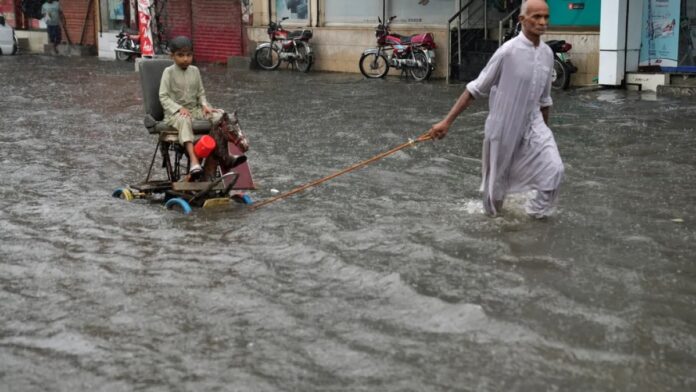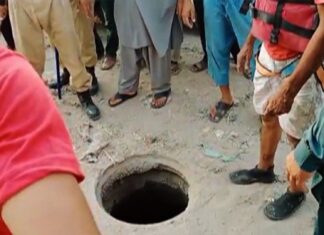LAHORE: Heavy monsoon rains have led to dangerous river levels across Punjab, causing widespread flooding, damage to crops, and disruption to local communities. Authorities have set up flood relief camps, and rescue teams are actively evacuating residents as the Meteorological Department warns of continued rainfall and potential flash floods in the coming days.
The Punjab Disaster Management Authority (PDMA) reports that the province is currently experiencing its seventh monsoon spell, which is expected to last until August 23. Officials have cautioned that cloudbursts could occur in areas such as Rawalpindi, Murree, Galliyat, Jhelum, Chakwal, and Attock, while heavy rain is forecast for major cities like Lahore, Sialkot, Faisalabad, and Multan.
The Sutlej River in Kasur has risen sharply, flooding villages and farmland. Water discharge at the Ganda Singh Wala headworks has reached 75,000 cusecs, and authorities fear additional water releases from India’s Harike Headworks could worsen the situation. The surge has destroyed crops, submerged agricultural land, and displaced numerous families. Rescue 1122 teams are using boats to reach stranded individuals, while flood relief camps are providing food, medical assistance, and livestock care.
In Bahawalnagar, breaches in embankments have allowed floodwaters to spread into villages, prompting local authorities to impose Section 144 to restrict movement along riverbanks. Similar situations have been reported in Chiniot, where the Chenab River is at low flood levels, and in Kundian, where the Indus River is at medium flood stage.
Narowal’s Zafarwal tehsil is also facing flooding due to the swelling of Dek Nullah, which has reached more than 22,000 cusecs of water. Rescue operations are ongoing in affected areas, and evacuation warnings have been issued for low-lying communities. The release of additional water into the Sutlej by India has also increased flood risks in Chishtian, where sugarcane and cotton crops have already been affected.
The Pakistan Meteorological Department has issued a red alert, warning of further heavy rains and flash floods in streams and nullahs across various regions, including Khyber Pakhtunkhwa, Kashmir, Gilgit-Baltistan, and parts of southeastern Balochistan. Urban flooding remains a major concern in low-lying areas of Lahore, Rawalpindi, Islamabad, and Peshawar.
Landslides and mudslides are also expected in hilly areas like Murree, Galliyat, Kashmir, and Gilgit-Baltistan. Authorities have advised the public to follow evacuation orders and avoid unnecessary travel. The Punjab tourism department has issued a safety advisory, restricting entry to rivers, streams, and other high-risk areas. Emergency control rooms have been set up at tourist sites, and rescue staff are on high alert.
Rainfall data over the past 24 hours indicates heavy downpours across several parts of Punjab, with Islamabad, Rawalpindi, and other cities reporting significant rainfall. Meteorologists predict that the monsoon system, fueled by moisture from the Arabian Sea and Bay of Bengal, will continue through early next week, with the heaviest rains expected in northern Punjab, Pothohar, upper Khyber Pakhtunkhwa, and northeastern Balochistan.
The tourism department’s advisory also highlighted the damage to popular tourist destinations, where roads, bridges, and accommodations have been severely affected. Public entry to high-risk areas, such as riversides, has been restricted to ensure safety. The Punjab Secretary of Tourism urged travelers to stay updated on weather conditions and to contact emergency helplines in case of danger.
In response to the ongoing crisis, the National Disaster Management Authority (NDMA), under the guidance of Prime Minister Shehbaz Sharif, has also issued warnings regarding tourism in disaster-prone areas and stressed the enforcement of travel restrictions during the monsoon season.























